Global Digital Marketing & Retail by Alex 98
Inspiration from across the world for retail enthusiasts, e-commerce professionals, marketing lovers and technology fans. Welcome back! I summarized some great links again, I stumbled upon this week.
Goodmorning another edition! Number 98 already, still some posts from my recent visit to South Korea and some generic news.
🇰🇷 Naver: highly innovative, but “user journey foreigners” needs some improvements
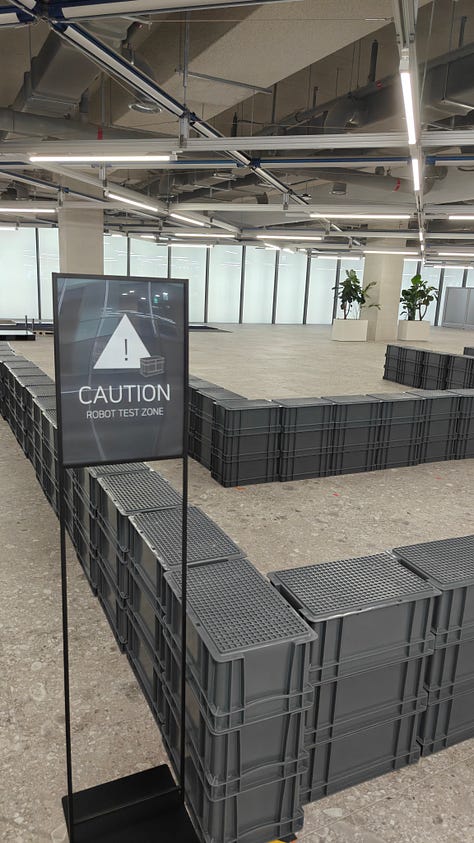
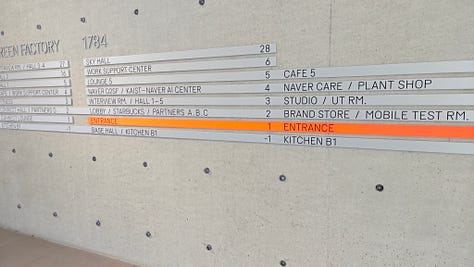

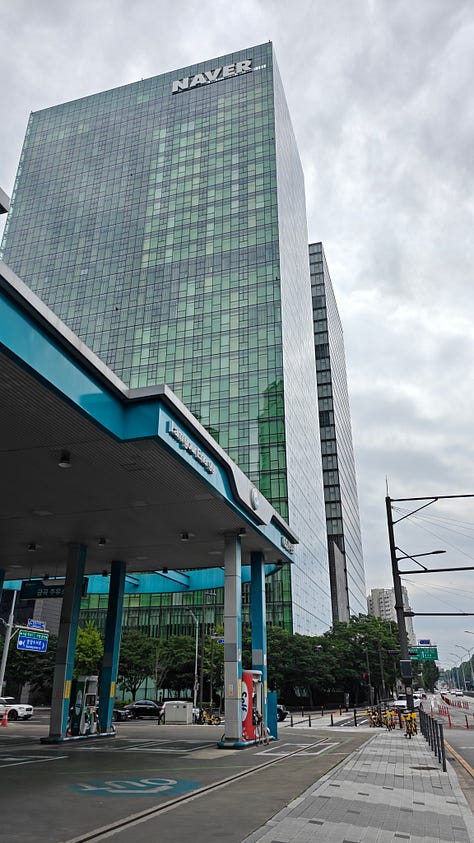
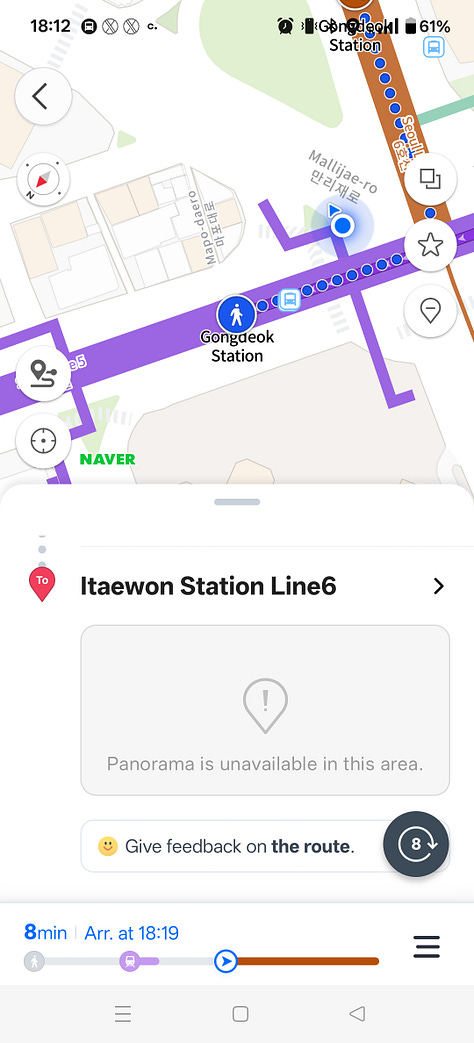
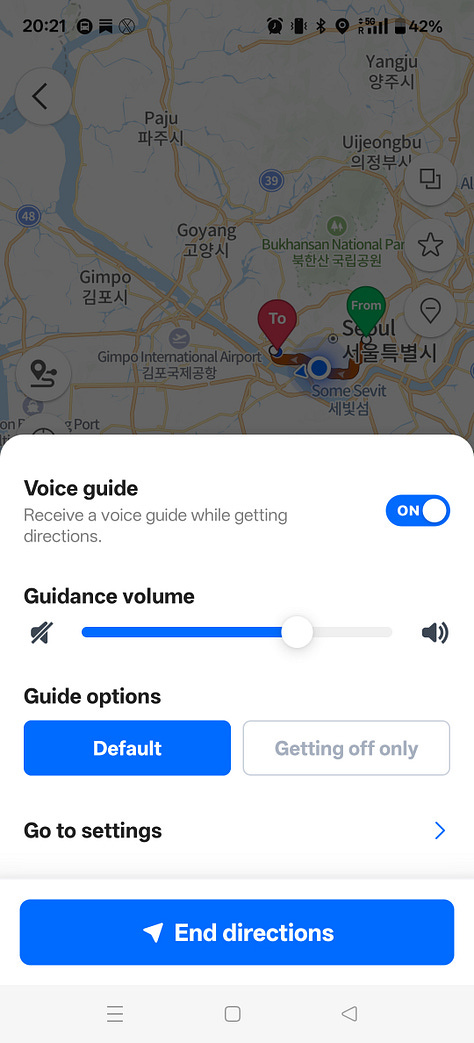

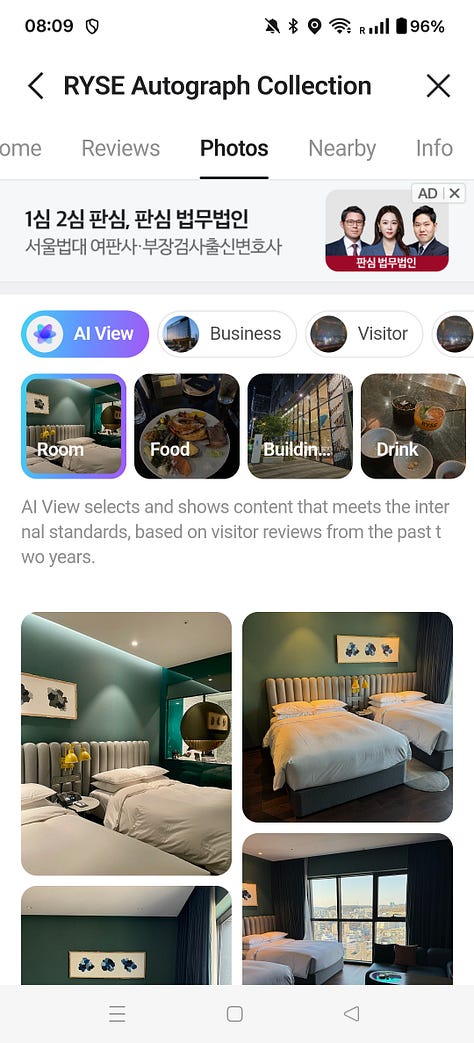

If you are traveling in South Korea, like I did, "Google Maps” isn’t working well. Same as in China, different political reason. So I switched to “Naver”, the local South Korean navigation app. Of course I had read about Naver before, but now I could actually use part of it’s ecosystem.
So what is Naver? Naver is South Korea’s (leading) digital hub, the internet and technology company from South Korea. It operates the country’s top search engine, a popular news portal, and services like Naver Pay, Line (messaging app, partly owned by them)), and Webtoon. Naver is also heavily involved in AI and robotics, cloud computing, and digital content platforms.
I decided I wanted to take a look at Naver HQ. Unfortunately they did not reply to my email for getting a tour, so I went there myself. It’s just outside Seoel, and I could walk around the public areas of their (huge) campus.
Walking there felt like it breath “innovation, I saw an AI lab, but also a “Robot testing area”, unfortunately there were no tests when I was there. They even claim to have the most “robot friendly” office building in the world. I did see robots though, they were working at the built in starbucks, bringing food to the offices.
Compared to other tech hubs, I didn’t see a lot of foreigners working there, while walking in the building, so I think they mostly focus on South Korea.
It was also a bit less bustling ,in my feeling compared, to Kakao (the other large e-commerce giant in South Korea) where I also went.
My experience from using Naver Maps -as a foreigner- is that it has a very good design, it’s very easy to use and there are tons of little great UI things they integrated, that I need to remember. Below a few of my experiences:
They tell exactly in which subway car to go, to get the fastest walking connection to my transfers or destination. Works like a charm. Unfortunately they do not tell yet how busy the cars/trains are.
They refresh automatically every 15 seconds or so with a very nice (manual) refresh icon at the bottom.
Even when I switched off data, it kept on working with most important features.
You have control, on what the app informs you about during your travel -they voice inform you of important steps-. Very convenient walking with my headset on.
What was sometimes unclear to me, when they mention a subway to a certain direction, but this direction is not on the large physical guidance signages in the subway, resulting in a less optimized omnichannel experience.
More often then not I needed chatgpt or another tool to ask how to write my destination in Naver Maps in order to get a result and even that failed quite a few times. The English search results are very poor, I understand with their local focus, but they can easily (and certainly with help of AI, make it much easier for foreign users. I have many ideas on that topic!😉
Naver Maps also has ‘indoor guidance’ very nice! Very useful for shopping malls or airports. You can actually zoom in and navigate inside buildings and see shops in those buildings. Of course also see offers of the shops directly. Wonder how they keep that updated.🧐
They actively use AI to show you the most interesting or useful (local) content.
Seems a bit odd in navigation: you always have to select mode of transportation first. It doesn’t give the fastest option automatically. (maybe related to my earlier post on Korean UX).
Well, I can dive in much further, but newsletters like this have limited space due to deliverability/readability. Very nice to dive into a company like Naver, to see what they are doing here in South Korea.
In summary: highly innovative, we can learn from it! Just they need someone to improve the foreigner/tourist user journeys of Naver (Maps). 😊 😉
It’s also good there is some counterweight to the global tech houses, with these locally focused players like Naver and Kakao! Very nice!👍
Naver: https://www.naver.com/
📘C.A.G.E framework : screenshot from Brand Global, Adapt Local book
I am reading this e-book during my holiday, with lots of cases on localization in business and e-commerce. Many of them very recognizable. I like to share the C.A.G.E framework, that is explained in the book. This is a framework used to analyze the differences (or "distances") between countries that can affect international business. The acronym stands for Cultural, Administrative, Geographic, and Economic distances and you find an example in the screenshot from AirBnB. Very useful if you expand abroad and do crossborder (e)-commerce.
Complete book: https://www.amazon.com/Brand-Global-Adapt-Local-Cultures/dp/139861971X
🇲🇾 Malaysian law on e-commerce localization goes wrong
Now besides South Korea, let’s also look at Malaysia, because they came into the e-commerce news this week as well. A new Malay law aims to bolster consumer protection by requiring Malay-language product titles and descriptions, plus accurate seller details and certification disclosures.
I think it makes sense (at least most of it), but the problem is how they introduced this law. Announced in april and live in june. For many sellers not doable. After the buzz, the Malay government has delayed the law.
Some of the things -as far as I read- from the law, can be solved with AI translation and some human oversight.
Others are more difficult, the requirement to display certifications for example.
It’s an example of I guess in essence good regulation rolled out without seller/platform input and without thinking through operational reality in (global) e-commerce.
That isn’t unique to Malaysia of course, plenty, plenty of EU examples as well.
But I share it because it’s good to know what’s happening in the global e-commerce world.
⚠️Attention: Matt Mochary open sourced his knowledge base!
Matt Mochary is one of sillicon’s valleys leading coaches. I had never heard of him, but I am also not in Sillicon Valley😂 and not a founder😂😂. Nevertheless the man, open-sourced his methods and resources on startup/entrepreneurship/management. I think it is very, very valuable (but warning it’s a lot). Lot’s of reading!
Check it out here: https://docs.google.com/document/d/18FiJbYn53fTtPmphfdCKT2TMWH-8Y2L-MLqDk-MFV4s/edit?usp=sharing
🇰🇷 Convenient: POS machines outside lunch/breakfast and coffee shops.
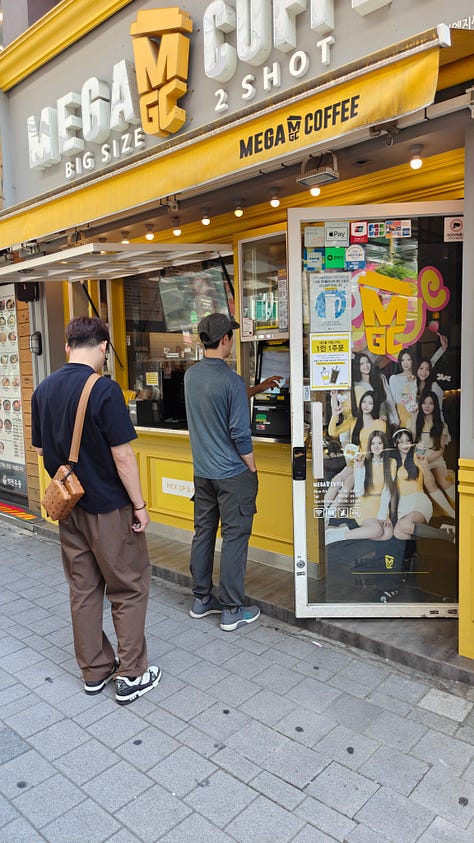


While traveling through Seoel I found this so very convenient. In all kind of (small) stores you could just order and pay via an (outside) terminal and get your products inside the store. I used it so much, mostly for lunch and breakfast. Of course it is also possible to order it online f.e. via Kakao, in advance as well, then the product(s) stand(s) on the outside of the store when you arrive, and you can just take it and move on. So convenient!
🍻GS25 flagship convenience store (including draft beer👍)!
I like convenience stores, not in Europe, but in Asia. In Europe (Hi NL) they are mostly overpriced, unfriendly staff and hardly have any innovation.
Some convenience stores in Asia are very special like the one I have seen in Japan where a convenience store from Family Mart doubled as a bar.
Here in Seoel there is also one that stands out. GS25 is a convenience store retail chain you see here a lot. One of their locations in Seongsu is special I read(link below), so I decided to take a look. Check the video, you see plenty of space where you can eat your beverages, plenty of coffee machines with different flavors(!), and fun thing: draft beer! 🍻
"Does the convenience store have to be this fun?" GS25 Do-Two Sungsu has accumulated 1 million visitors in 30 months only after opening ↑ Convenience stores reflecting the pop-up concept of more than 1,100 visitors every day...In the first 30 months of the industry, 80% of MZ among all 45 brands and pop-up customers became Korean tourist attractions visited by foreign customers
Details and more pictures: https://www.mk.co.kr/en/business/11311198
Or here: https://biz.chosun.com/en/en-retail/2025/05/08/2GG577X6PNGU5FLVEMOY4REPM4/
🌪️Will Qatar airlines lead IROPS AI experiences in the near future?

Now this I find very interesting, always like to have worked on things that can dramatically improve the customer experience in disrupted times, well this is a great example. A few weeks ago Qatar’s and Hamad’s operations were disrupted. Read the open letter from Qatar’s CEO vs the letter of a traveler who experienced it.
Now I am sure Qatar will not let this happen again and will heavily invest in app /web development because despite the very complicated environments airports and airlines are, they also have massive amounts of (legacy) data, and AI can really help structure that and prevent large parts of the chaos that unfolded a few weeks ago.
Very curious how Qatar and Hamad airport will use digital means to prevent this in the future. I can already think of many use cases, like this one: imagine already to be able during the flight to get explanation on the disruption and a few options to choose from (like re-booking, a night in a hotel, or lounge access).
I am very interested in this. Curious to see if and how they make improvements and optimize it per language/culture.
Passenger’s experience article: https://simpleflying.com/qatar-airways-passenger-tells-of-doha-airport-chaos/
Qatar’s CEO’s open letter: https://www.qatarairways.com/press-releases/en-WW/251548-to-our-passengers-an-open-letter-from-qatar-airways-group-chief-executive-officer
That’s it for this edition. Thank you so much for reading, liking and subscribing!
Curious for more immediately?
Check out my archive of all previous newsletters:



